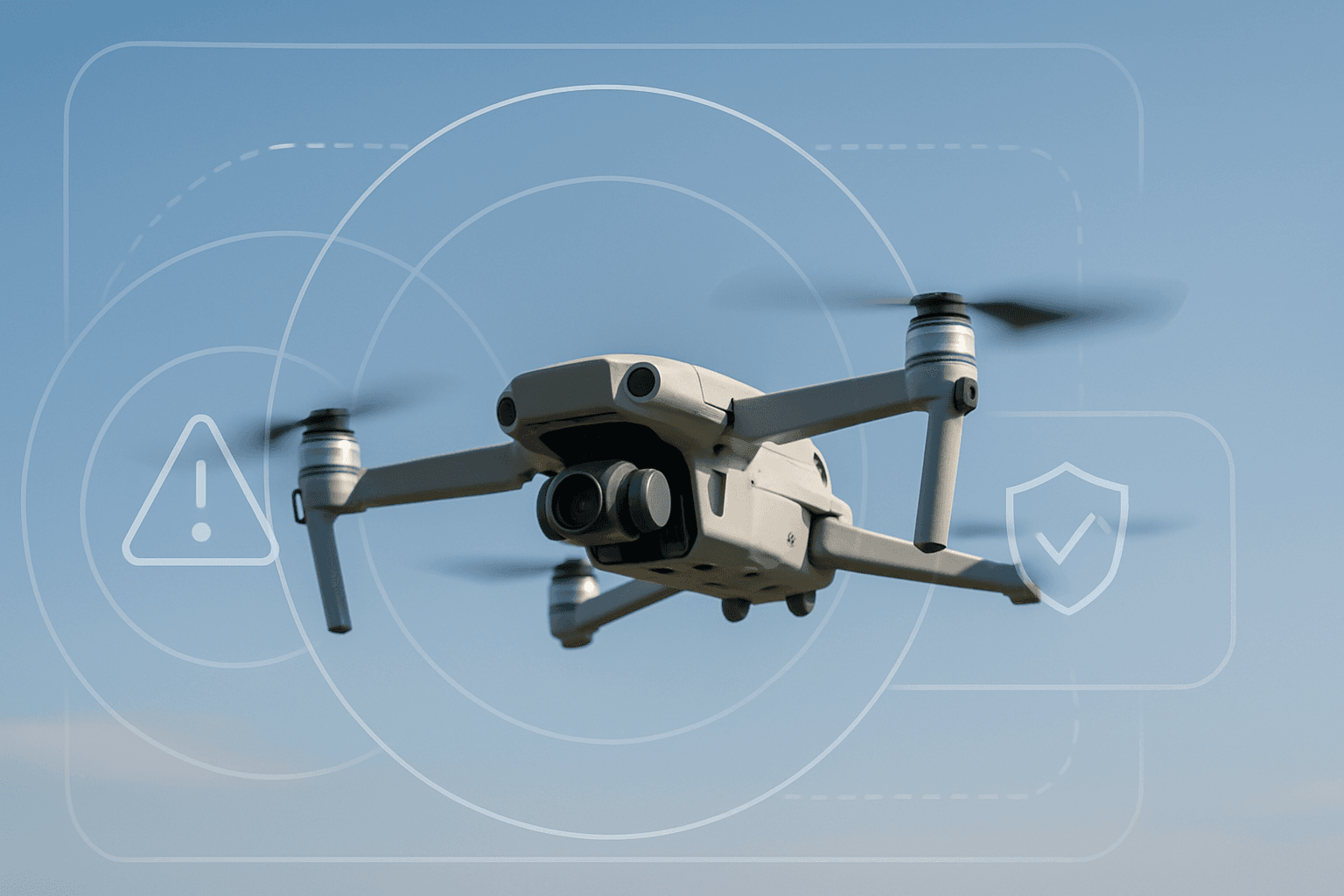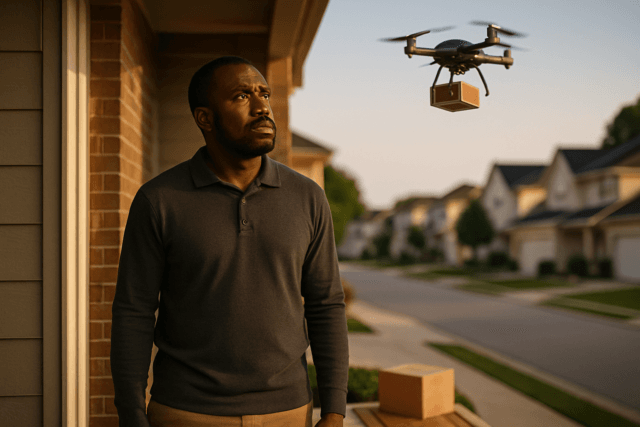Drones have revolutionised various fields, from photography and videography to surveying and delivery services. As the popularity of drones soars, so does the importance of understanding and adhering to the regulations surrounding their use. In the UK, the Civil Aviation Authority (CAA) has implemented a comprehensive framework to ensure the safe and responsible integration of drones into the airspace. This guide provides a detailed walkthrough of how to register a drone in the UK in 2025, covering everything from eligibility to essential safety guidelines.
Do You Need to Register Your Drone? Key Requirements
Before diving into the registration process, it’s crucial to determine whether your drone needs to be registered with the CAA. As of 2025, the key requirements are:
- Weight: Any drone or model aircraft weighing between 250g and 20kg must be registered.
- Camera: If your drone has a camera, it generally needs to be registered, regardless of weight (unless it’s classified as a toy).
Exemptions:
- Drones weighing below 250g without a camera and classified as toys do not require registration.
Who Needs Which ID?
The UK drone registration system involves two types of IDs:
- Operator ID: Required for the person or organisation responsible for the drone.
- Flyer ID: Required for the individual who is flying the drone.
Let’s break down who needs which ID:
- Recreational Users: If you own and fly your drone, you need both an Operator ID and a Flyer ID.
- Commercial Users: If you operate a drone for business purposes, you also need both an Operator ID and a Flyer ID.
- Organisations: If an organisation owns drones, it must register for an Operator ID, and individuals flying those drones must obtain a Flyer ID.
Step-by-Step Guide to Drone Registration in the UK
1. Determine If You Need to Register
First, assess whether your drone meets the criteria for registration based on its weight (between 250g and 20kg) and whether it has a camera. If registration is required, proceed to the next steps.
2. Obtain an Operator ID
The Operator ID is linked to the person or organisation responsible for the drone. Here’s how to obtain one:
- Visit the CAA Website: Go to the official CAA drone registration portal: https://register-drones.caa.co.uk/individual.
- Create an Account: If you don’t have an existing account, create one by providing a valid email address and setting up your profile.
- Provide Details: Fill in the required information about yourself or your organisation.
- Provide Details of Your Drone: You’ll need to provide information about your drone, such as the make, model, and weight. Ensure that the details you provide are accurate.
- Pay the Fee: There is an annual fee for registering as an operator. The registration fee is typically around £11.13, and it lasts for one year. This fee covers all drones under your responsibility. Payment is typically made online through the CAA portal.
- Receive Your Operator ID: Once you’ve completed the registration and payment, you’ll receive your Operator ID. This ID must be clearly visible on your drone.
3. Get a Flyer ID
A Flyer ID is required for anyone who will be flying the drone. Follow these steps to get your Flyer ID:
- Prepare for the Theory Test: Study the UK Drone and Model Aircraft Code to understand the rules and regulations for flying drones safely and legally.
- Take the Online Theory Test: The CAA requires that you pass a multiple-choice exam based on the UK’s Drone and Model Aircraft Code. This ensures you have the necessary knowledge to operate a drone safely and responsibly. Access the online theory test through the CAA website. The test is free and consists of 40 multiple-choice questions.
- Pass the Test: Aim to pass the test by answering the questions correctly. You can retake the test if you don’t pass on your first attempt.
- Receive Your Flyer ID: Upon successful completion of the test, you will receive your Flyer ID.
4. Display Your IDs
- Operator ID: Your Operator ID must be displayed on your drone.
- Flyer ID: Your Flyer ID serves as proof that you’ve passed the necessary drone flyer ID test.
5. Make It Official with Drone Operator ID Cards
Consider purchasing a Drone Operator ID Card. These cards fit right in your wallet and are made from biodegradable plastic, so they’re good for the planet too. All the important stuff like your name, Operator ID, and Flyer ID is right there on the card. And with prices starting at just £5, it’s an easy and affordable way to keep all your important drone info handy.
Understanding UK Drone Laws: Key Regulations in 2025
Navigating the legal landscape of drone operation in the UK requires a thorough understanding of the rules set forth by the CAA. Here are some key regulations to keep in mind in 2025:
- Maximum Flight Altitude: Drones must not exceed 400 feet (120 meters) above the surface.
- Visual Line of Sight (VLOS): Operators must maintain a clear line of sight with the drone at all times.
- Restricted Airspace Compliance: Permission is required before flying in restricted airspace (e.g., near government buildings, military bases).
- Airport No-Fly Zone: No flying within a 5-kilometer (3-mile) radius of airports.
- Distance from People: Keep at least 50 meters away from people not involved in the operation.
- Distance from Built-up Areas: Drones weighing 250g or more must remain 150 meters away from residential, commercial, or industrial zones.
Operational Categories for Drones in 2025
Understanding the operational categories for drones is essential for compliant flying:
- A1 (Flying Over People): Allowed for drones under 250g.
- A2 (Flying Close to People): Requires a C2 drone and an A2 Certificate of Competency.
- A3 (Flying Far from People): For drones up to 25kg, only in remote areas.
Complying with Drone Laws for Commercial Purposes
If you intend to use drones for commercial purposes, there are additional requirements to consider:
- Registration and Licensing: All commercial drone operators must register with the CAA and obtain the appropriate certifications.
- Insurance: Commercial drone operators are required to have adequate liability insurance to cover potential damages or injuries resulting from their operations.
Penalties for Breaking the Rules
The UK has strict penalties for those who break drone regulations. If you fly your drone dangerously, invade privacy, or enter restricted airspace, you could face the following penalties:
- Fines up to £1,000 for minor infractions, such as flying above the allowed height limit or without registration.
- Criminal prosecution for more serious offenses, including potential prison sentences if your drone is used recklessly or in a manner that endangers life.
Staying Informed: Keeping Up with Regulation Changes
Drone regulations can change, so it’s essential to stay informed and regularly consult the CAA website or official communications for updates.
Conclusion
Registering your drone in the UK is a legal requirement and a crucial step towards ensuring safe and responsible flying. By following this comprehensive guide, you can navigate the registration process with ease and enjoy the exciting possibilities that drone technology offers while remaining compliant with the law. Happy flying.





